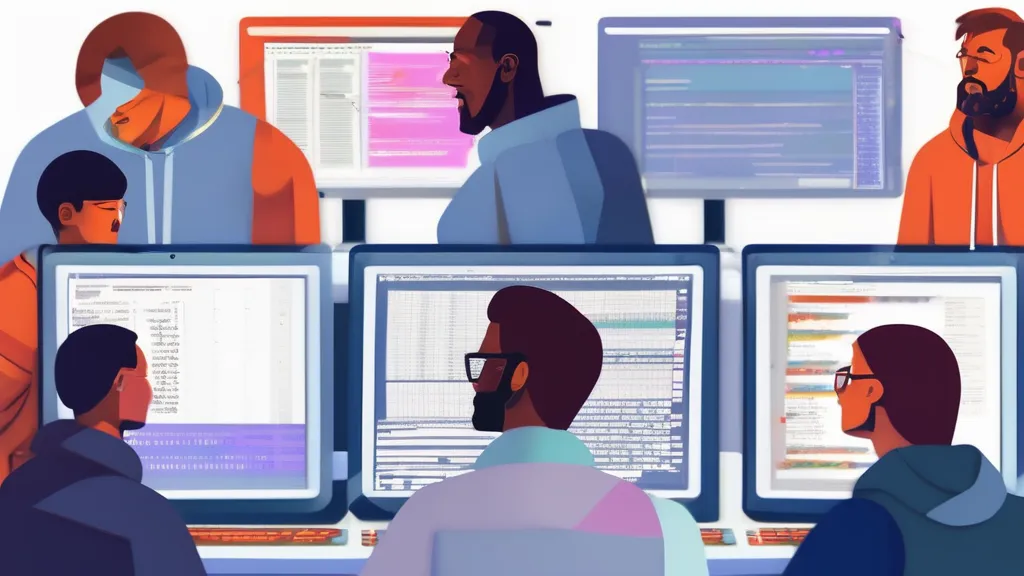The Case for Trunk-Based Development: Why the Future of Software Delivery Lies in Simplicity and Collaboration
Exploring the Benefits and Challenges of Trunk-Based Development in Modern Software Engineering

- Trunk-based development promotes continuous integration and collaboration.
- It reduces lead time and enhances software quality.
- Adopted by leading companies like Google and Netflix.
- Addresses economic and cultural challenges in software development.
The Evolution of Software Development Practices
In the ever-evolving landscape of software development, methodologies and practices have undergone significant transformations, each promising to optimize productivity, enhance collaboration, and improve the quality of software delivery. Among these, trunk-based development emerges as a practice that is both highly debated and increasingly adopted by leading organizations. But what exactly is trunk-based development, and why should the software industry care?
Understanding Trunk-Based Development
Trunk-based development, at its core, is a version control management practice where developers integrate small, frequent changes to a mainline—or ’trunk’—of code. This contrasts with the more traditional feature branching approach, where developers create separate branches for new features or bug fixes, only merging back into the mainline after completion.
This approach promotes continuous integration (CI), where the code is continuously tested and integrated into the mainline, drastically reducing the likelihood of integration conflicts. According to the State of DevOps Report 2015, organizations practicing trunk-based development report higher IT performance and delivery speed, a finding echoed by the book Accelerate, which correlates CI practices with superior software development outcomes.
The Benefits of Trunk-Based Development
Enhanced Collaboration and Ownership
One of the most significant advantages of trunk-based development is its ability to foster a collaborative culture. By requiring developers to commit small changes directly to the mainline, teams are naturally encouraged to communicate and collaborate more effectively. This approach promotes collective ownership of the codebase, reducing individual blame and increasing team responsibility for the quality of the software.
In contrast, feature branching often leads to siloed work, where developers can become isolated from the mainline, delaying integration and potentially introducing integration conflicts. In the words of Martin Fowler, a thought leader in software engineering, “Trunk-based development supports a high-trust environment where the whole team takes responsibility for the codebase.”
Continuous Integration and Quality Assurance
Trunk-based development inherently supports continuous integration practices. By continuously integrating changes, teams can identify and address bugs earlier in the development process. This early detection is crucial; according to a study by the IEEE in 2016, the cost of fixing a bug increases exponentially the later it is discovered in the development lifecycle.
Frequent commits also mean smaller changesets, which are easier to review and test, leading to higher code quality and a more stable product. This continuous integration and testing model ensures that the mainline is always in a releasable state, enabling more frequent and reliable releases.
Reduced Lead Time and Increased Delivery Speed
By minimizing work-in-progress (WIP) and eliminating the need for extensive feature branches, trunk-based development significantly reduces lead time—the time it takes from starting work on a feature to its deployment in production. This reduction is supported by Little’s Law, which states that reducing WIP directly decreases lead time.
With faster integration and deployment cycles, organizations can respond more quickly to market changes and user feedback, providing a significant competitive advantage. Companies like Netflix and Google have successfully leveraged trunk-based development to maintain their rapid release cycles and innovation pace.
Addressing Common Concerns
Despite its benefits, trunk-based development is not without its critics. Some argue that the absence of feature branches could compromise code quality, as changes are committed directly to the mainline without the safety net of a pull request review process.
However, proponents argue that this concern is mitigated by robust automated testing and CI practices that ensure only high-quality code is integrated. Moreover, the collaborative nature of trunk-based development means that code reviews can still take place, albeit in a more dynamic and ongoing manner.
Economic and Cultural Implications
From an economic perspective, trunk-based development reduces the inventory of WIP—unfinished code that represents capital tied up without generating returns. By minimizing this inventory, organizations can allocate resources more efficiently and reduce the cost of delay, as highlighted in the 2016 study by Dr. Nicole Forsgren and Jez Humble.
Culturally, trunk-based development encourages a mindset of continuous improvement and innovation. With faster feedback loops, teams can experiment more freely, fostering a culture of learning and adaptation. This environment not only boosts employee satisfaction but also drives higher organizational performance.
Real-World Success Stories
Several leading tech companies have embraced trunk-based development with remarkable success. For instance, Google operates on a single monolithic repository, with thousands of developers committing to a single trunk. This approach has enabled Google to maintain a consistent and high-quality codebase, even at an unprecedented scale.
Similarly, Facebook, known for its “move fast” principle, uses trunk-based development to deploy code changes rapidly and efficiently, ensuring that its platform remains agile and responsive to user needs.
Conclusion: Embracing the Future of Development
Trunk-based development offers a compelling alternative to traditional feature branching, with its emphasis on simplicity, collaboration, and continuous integration. By adopting this approach, organizations can unlock higher quality software, faster delivery times, and a more innovative and engaged workforce.
As the industry continues to evolve, the question remains: Will more organizations embrace trunk-based development and its transformative potential? The evidence suggests that this practice, once misunderstood, could very well become the cornerstone of modern software development.
Whether you are a developer, a team leader, or an executive, the time has come to consider the benefits of trunk-based development. How will your organization adapt to these changing tides?